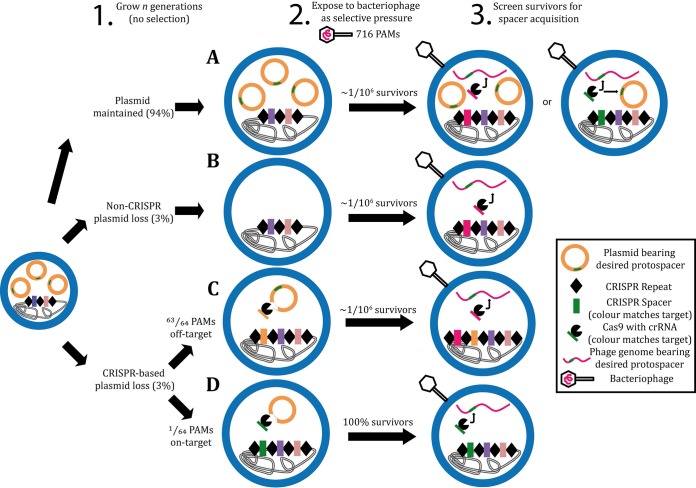FIG 1 .
Programming a native CRISPR array. Bacterial growth in the absence of selection for the plasmid bearing the desired protospacer (step 1) results in one of four scenarios. In scenario A, the plasmid is maintained and exposure to a virulent phage (step 2) results in typical CRISPR immunization, with one in 106 survivors (step 3). There could be a moderate bias toward acquisition of the desired spacer, as it is more abundant (high-copy-number plasmid) than any other immunity-conferring protospacer. In scenario B or C, the plasmid is either lost through acquisition of a plasmid-targeting spacer other than the desired one (scenario C) or by other means (scenario B). When exposed to phages, these cells are only capable of typical naive CRISPR immunization, with one in 106 survivors having randomly acquired 1 of the 716 possible phage-derived spacers. It is possible that the fitness benefit of curing the plasmid has enriched the population for cells more prone to CRISPR acquisition, offering an increase in the immunization rate. In scenario D, the plasmid is lost due to acquisition of the desired plasmid-borne, phage-derived protospacer. While this event should be rare (one of the 64 protospacers on the plasmid is the desired one), all cells that have acquired this spacer will survive exposure to the phages. These should be a considerable proportion of the colonies surviving phage exposure.

